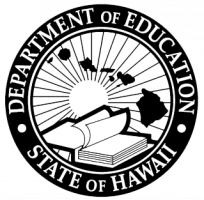HI-AWARE

Project Dates: 2014 – 2020
Funded by: Department of Health and Human Services
About
Need. CDS has been contracted by the Hawaii State Department of Education to evaluate its SAMHSA-funded Project HI-AWARE (Advancing Wellness and Resilience in Education) aimed at addressing a general lack of good programming and well-trained personnel for identifying and supporting students at-risk for developing mental health problems. Results of the Youth Risk Behavior Survey (YRBS) indicate that many public school students in Hawaii experience unrecognized bouts of depression, may consider suicide, and often have distressing experiences such as bullying on campus.
Overall Goals and Objectives. HI-AWARE is focused on three School Complex Areas: Waianae-Nanakuli, Leilehua-Mililani-Waialua, and Kau-Keaau-Pahoa. The evaluation is designed to answer the following questions as the basis for continuous quality improvement of the project.
Process Questions
- What barriers to effective implementation were identified and how successful were efforts to address them?
- How successful were efforts to engage and involve youth, families, and other school community stakeholders?
- Did levels and extent of collaboration among child-serving agencies increase, and if so in what ways?
- What were the barriers to interagency collaboration, partnership development, and shared decision-making and how were they addressed?
- How did school practices, including use of evidence-based practices (EBPs), change?
- To what extent were community-based mental health services increased?
- How many students were provided with mental health and related services?
Outcome Questions
- Did increases in awareness and understanding of youth mental health and wellbeing issues in school communities meet the target of 10% yearly from baseline?
- Were Youth Mental Health First Aid (YMHFA) training targets met?
- Did at least 80% of schools have a documented internal referral system by September 2018?
- Were at least 10% of school personnel trained annually in the use of EBPs?
- Was there a statistically significant decrease in % of students reporting suicidal and self-injurious behavior on the YRBS?
- Was a statewide body with broad representation identified or established to coordinate and promote collaboration and advocacy for child and adolescent mental health?
- Did # of local community stakeholder groups partnering with schools to address behavioral health needs increase by at least 12 each year?
- Did # of students provided with community-based mental health services increase by 30% from baseline by September 30, 2019?
- Did change over time in the pattern of service provision by the three tiers meet the expectation of greater use of Tiers 1 and 2?
- Did third-party billing receipts from Medicaid increase by at least 10% by June 30, 2018?
Unusual Features. As required by SAMHSA, HI-AWARE is training hundreds of school and mental health workforce personnel as well as community members in YMHFA. This 8-hour course provides trainees with skills and knowledge for recognizing signs and symptoms of emerging mental health problems in youth and making appropriate notifications and referrals.
Expected Benefits. Schools will have enhanced capacity to identify and support students with emerging mental health issues; school climates will be enhanced as reflected in reduced bullying and absenteeism; there will be increased community-based supports and services; community members and families will gain knowledge and skills for promoting mental health; collaboration among service-providing agencies will be enhanced; and there will be increased reimbursements for services from Medicaid.
Principal Investigator: Leslie Okoji
Partners
HI DOE, School Complex Areas: Waianae-Nanakuli, Leilehua-Mililani-Waialua, and Kau-Keaau-Pahoa


